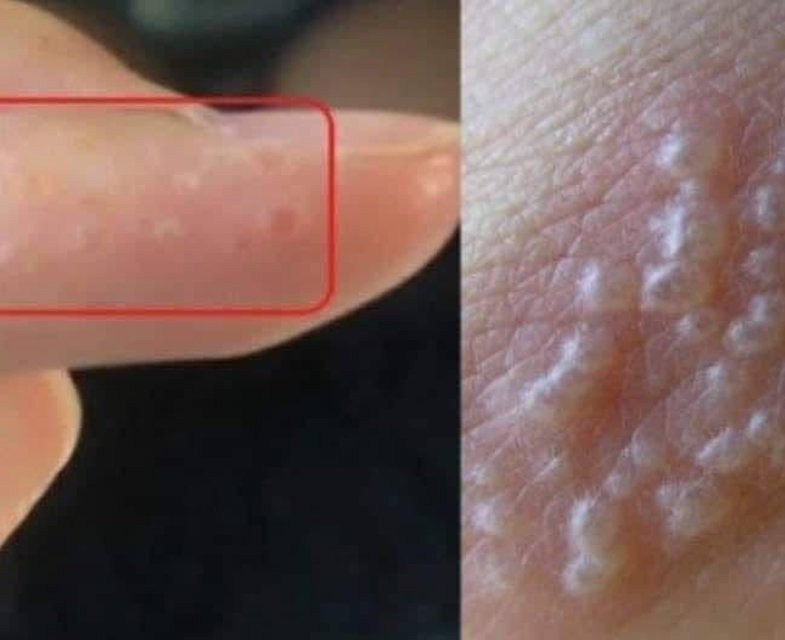If you’ve recently noticed clusters of painful, red, itchy bumps on your hands or feet, you might be experiencing dyshidrotic eczema—a common but often misunderstood skin condition. Though it isn’t contagious or life-threatening, dyshidrotic eczema can be incredibly uncomfortable and sometimes even debilitating without the right care.
Let’s break down what it is, how to recognize it, and what you can do to manage the symptoms effectively.
What Is Eczema?
Eczema is a broad term that describes a group of conditions that cause inflammation, irritation, and itching of the skin. In the U.S., approximately 35 million people are affected by some form of eczema. Interestingly, about 70% of cases occur in children under five, though adults can experience flare-ups throughout their lives.
Common symptoms of eczema include:
-
Red, inflamed skin
-
Severe itching
-
Dry or scaly patches
-
Blisters that may leak or crust
-
Skin thickening over time
Eczema is not contagious, but it is often triggered by genetic predisposition, allergens, stress, irritants (like soaps or metals), or even changes in the weather.
What Is Dyshidrotic Eczema?
Among the different types of eczema, dyshidrotic eczema (also known as pompholyx) stands out because of its distinct symptoms and the areas it affects.
This chronic, recurring skin condition usually targets the hands, fingers, feet, and soles, and is known for causing clusters of tiny, deep-seated blisters, typically measuring 1–2 millimeters in size. These blisters can be incredibly itchy and painful, and the surrounding skin often becomes red, cracked, and scaly. The blisters typically last for several weeks before drying out, peeling, and healing.
Alternate Names for Dyshidrotic Eczema
You might also hear dyshidrotic eczema referred to by several other names, depending on where it occurs:
-
Pompholyx
-
Acute vesicular hand dermatitis
-
Acute palmoplantar eczema
-
Vesicular endogenous eczema
-
Cheiropompholyx (affecting the hands)
-
Podopompholyx or pedopompholyx (affecting the feet)
-
Cheiropodopompholyx (affecting both hands and feet)
What Triggers Dyshidrotic Eczema?
While the exact cause isn’t fully understood, several common triggers have been identified:
-
Stress: Emotional tension is a major trigger for many eczema sufferers.
-
Seasonal Allergies: Dyshidrotic eczema often flares up in the spring and summer, possibly due to pollen and warmer weather.
-
Excessive sweating: Moist environments (like sweaty palms or feet) can worsen symptoms.
-
Contact with irritants: Nickel, cobalt, harsh soaps, and detergents are frequent culprits.
-
Fungal infections: Particularly on the feet, fungal infections like athlete’s foot can trigger outbreaks.
Symptoms to Watch For
The hallmark signs of dyshidrotic eczema include:
-
Tiny, fluid-filled blisters on the sides of fingers, palms, or soles
-
Itching or burning sensations, often intense
-
Redness and inflammation in the affected areas
-
Cracking, flaking, or peeling skin as blisters heal
-
Pain or soreness, especially if blisters become infected
If you’re unsure whether your symptoms match, it’s best to consult a dermatologist. Many skin conditions can look similar, including fungal infections, contact dermatitis, or psoriasis.
Treatment Options
While there’s no known cure for dyshidrotic eczema, the condition is very manageable with proper treatment. Depending on the severity of your flare-ups, your healthcare provider might recommend:
At-Home Care
-
Cool compresses to soothe itching and reduce inflammation
-
Moisturizers and barrier creams to keep skin hydrated
-
Avoiding triggers, like allergens and irritants
-
Wearing cotton gloves or socks to reduce friction and sweating
Medical Treatments
-
Topical corticosteroids to reduce inflammation
-
Antihistamines for itch relief
-
Phototherapy (light treatment) for chronic cases
-
Immune-suppressing creams like tacrolimus for stubborn rashes
-
Antibiotics if there’s a secondary bacterial infection
Living with Dyshidrotic Eczema
Living with a chronic skin condition like dyshidrotic eczema can be frustrating—but you’re not alone. Understanding your triggers, taking preventive steps, and seeking medical support when needed can significantly improve your quality of life.
If you’re dealing with recurring blisters or painful red patches on your hands or feet, don’t just shrug it off as “dry skin.” It might be dyshidrotic eczema—and with the right management, you can get it under control.
Have you or someone you know struggled with this condition? Share your experience or questions in the comments below. And don’t forget to subscribe for more expert-backed health tips and skin care insights.
